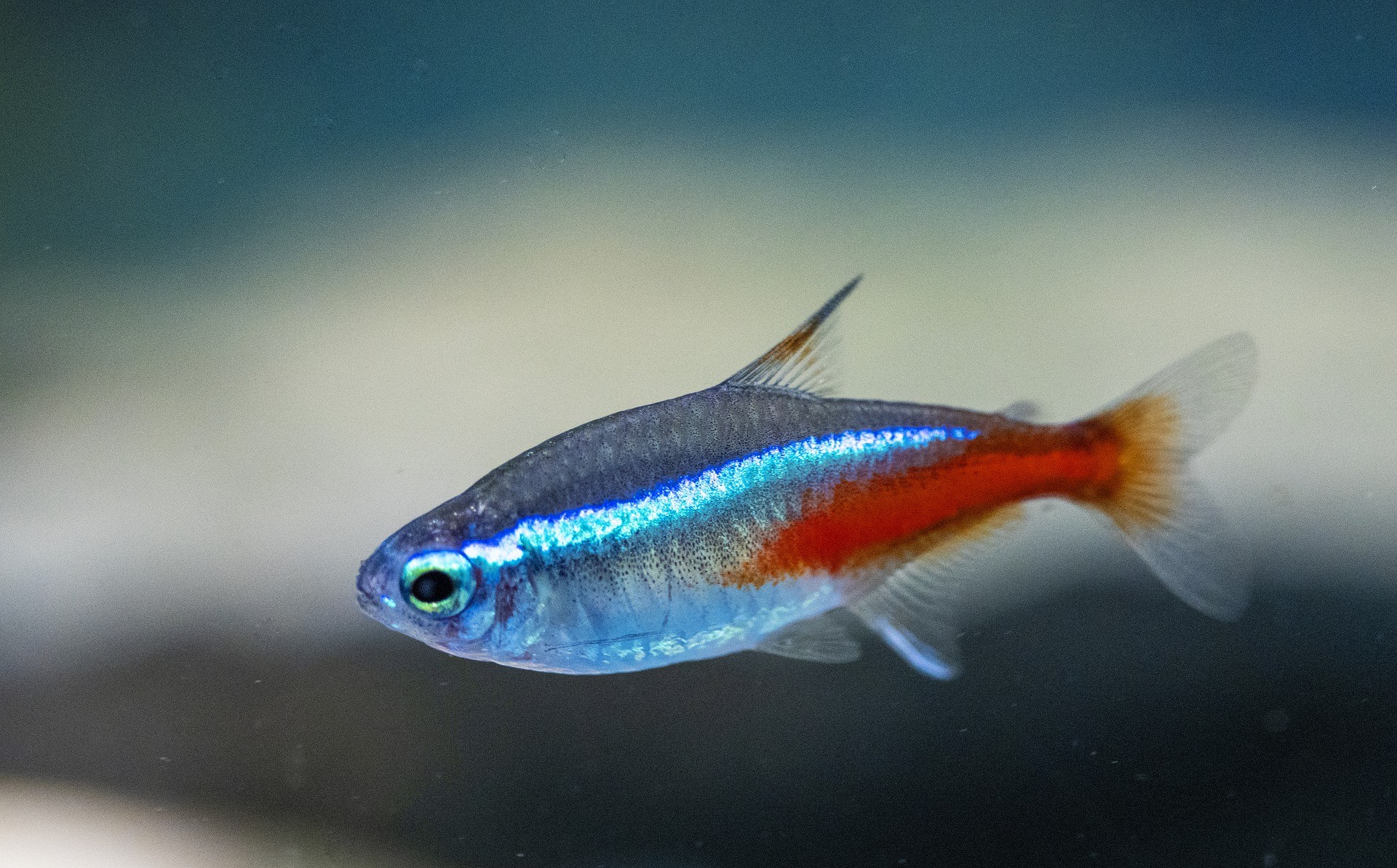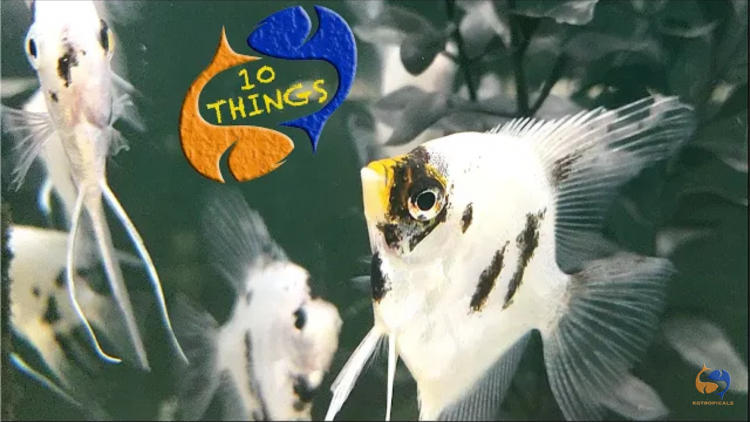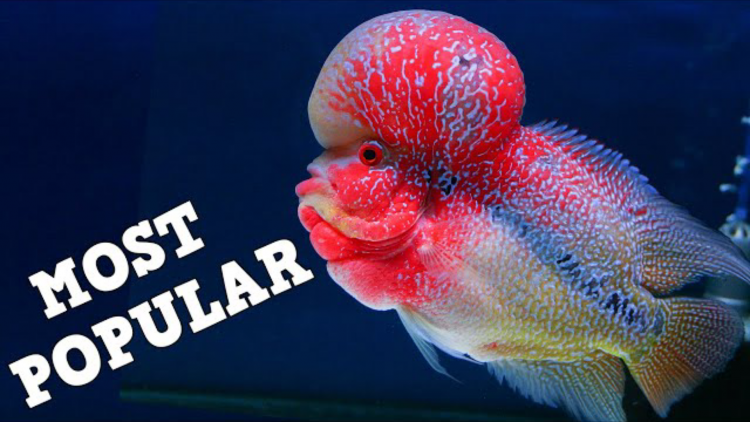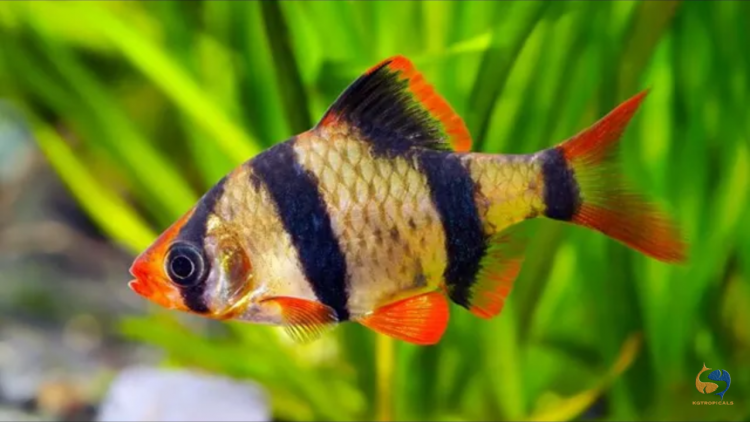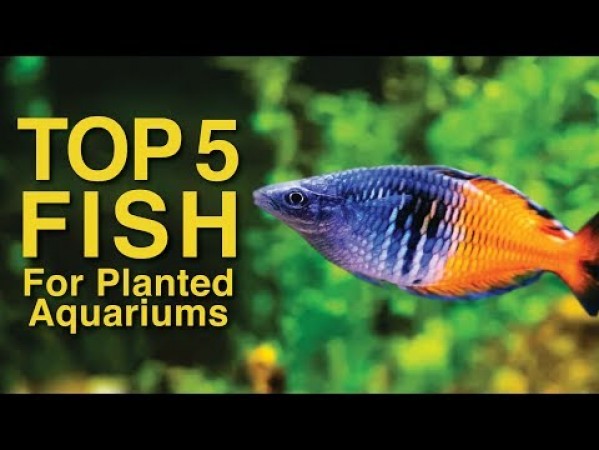- Name:
Gold Marbled Veiltail Angelfish
(View AKA's) - Family: Cichlidae
- Species: Angel Fish
- Scientific Name: Pterophyllum Scalare
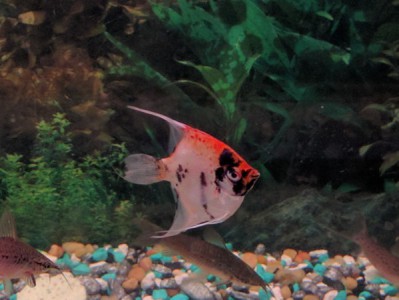

General info about Gold Marbled Veiltail Angelfish
Pterophyllum scalare was one of the first species to be kept in captivity, and to this day it is still one of the most common in the market. It’s popularity led to many cross-breedings so now there are many different varieties. In the wild, these fish are silver with dark vertical stripes, however, in the market, it is possible to find many varieties like Black, Gold, Marble and more. The Gold Marbled variety is the same as the Gold variety but with black marbling. There is also more than one variety concerning fins, Veil Angels are a variety of angelfish that have longer fins.
These fish are diamond shaped with a round, laterally compressed body, triangular dorsal and anal fins and they can reach 6 inches in length and 8 inches or more in height. Due to their height, a tall aquarium is essential to keep these fish, a 30-gallon tank is the bare minimum, however, if there is more than one individual the tank needs to be larger. The water should have temperatures ranging from 76ºF to 86ºF and pH between 6.0 and 7.4. The tank should also have rocks, hardy plants, open area for swimming and subdued lighting. This species is peaceful and can be kept in a community aquarium with tankmates of its size; it may eat any smaller fish present in the aquarium. These fish school in the wild, as such, they should be kept in a group, when they are older they will pair off and will get territorial. New fish should never be added to an already existing group.
Gold Marbled Veiltail Angelfish Diet & Nutrition
This species is omnivorous. In the wild, it feeds mainly on insect larvae and small fishes. In captivity, they can be supplied with pellets, flakes, live and frozen foods.
Determining Sex of Gold Marbled Veiltail Angelfish
There is no way to distinguish sex out of the breeding season, during breeding season male’s genital papillae is pointed while the females is blunt.
Breeding & Spawning Gold Marbled Veiltail Angelfish
After a “couple” is formed, it starts to defend a territory inside the aquarium becoming aggressive to any other fish that comes close to it. Once they choose a spawning site, which can be a leaf, a rock or even glass, they will carefully clean it. The female will lay her eggs, and the male will fertilize them. The pair will often oxygenate the eggs to prevent them from getting fungus, if an egg does get infected with a fungus, one of the parents will separate it from the rest. Eggs hatch after two days and the fry will stay in the spawning site for five more days, during this time they will feed on the yolk sac. Seven days after hatching, the fry becomes free swimming and can be supplied with newly hatched brine shrimp. To breed this species in captivity, water pH should be about 6.5, and water temperature should be between 80ºF and 85ºF.
Gold Marbled Veiltail Angelfish Origin
These fish can be found in slow-moving waters in South America.
Original Detail
| Name | Species | Family | Scientific Name | More Detail | Added by |
|---|---|---|---|---|---|
| Gold Marbled Veiltail Angelfish | Angel Fish | Cichlidae | Pterophyllum Scalare | Pterophyllum scalare was one of the first species to be kept in captivity, and to this day it is still one of the most common in the market. It’s popularity led to many cross-breedings so now there are many different varieties. In the wild, these fish are silver with dark vertical stripes, however, in the market, it is possible to find many varieties like Black, Gold, Marble and more. The Gold Marbled variety is the same as the Gold variety but with black marbling. There is also more than one variety concerning fins, Veil Angels are a variety of angelfish that have longer fins. These fish are diamond shaped with a round, laterally compressed body, triangular dorsal and anal fins and they can reach 6 inches in length and 8 inches or more in height. Due to their height, a tall aquarium is essential to keep these fish, a 30-gallon tank is the bare minimum, however, if there is more than one individual the tank needs to be larger. The water should have temperatures ranging from 76ºF to 86ºF and pH between 6.0 and 7.4. The tank should also have rocks, hardy plants, open area for swimming and subdued lighting. This species is peaceful and can be kept in a community aquarium with tankmates of its size; it may eat any smaller fish present in the aquarium. These fish school in the wild, as such, they should be kept in a group, when they are older they will pair off and will get territorial. New fish should never be added to an already existing group. |
PalaciosAn |


